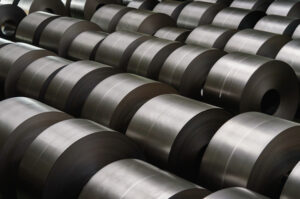
In January-June 2024, Ukraine imported 22,617 thousand tons of coffee, which is 6.1% less than in the same period a year earlier, when foreign purchases amounted to 24,094 thousand tons.
According to statistics released by the State Customs Service (SCS), spending on coffee purchases in the first half of the year rose by 36.9% to $173.403 million, compared to $126.684 million in the same period a year earlier.
The main suppliers of coffee to Ukraine were Poland, which accounted for 16.58% of imports, worth $28.749 million, Brazil – 12.75% and $22.104 million, and Germany – 12.49% and $21.653 million.
A year earlier, the top three coffee suppliers to Ukraine were Poland (16.83% worth $21.326 million), Italy (15.87% worth $20.1 million), and Brazil (12.31% worth $15.598 million).
Tea imports in January-June 2025 decreased by 22.87% to 5,452 thousand tons compared to 7,069 thousand tons in the same period last year. In monetary terms, imports in the first half of 2025 decreased by 16.26% and amounted to $20.957 million compared to $25.027 million last year.
At the same time, the three key suppliers of tea to Ukraine in January-June remained unchanged: Sri Lanka (30.13% worth $6.313 million), Kenya (17.77% worth $3.724 million) and China (14.63% worth $3.067 million). Last year, these countries accounted for 28.95%, 23.07%, and 11.33% of tea exports to Ukraine, bringing them $7.247 million, $5.774 million, and $2.835 million, respectively.

Imports of tractors to Ukraine in January-June 2025 amounted to $421.05 million, which is slightly less than in the same period in 2024 ($425 million), according to statistics from the State Customs Service.
According to the published statistics, tractors were mainly imported from the United States (18.9% of total imports of this equipment, or $79.7 million), China (17.5% or $73.8 million) and Germany (17.4% or $73.1 million), while a year ago it was Germany ($68.6 million), the Netherlands ($60.6 million) and China ($55.6 million).
In June of this year, imports of tractors increased by 21% compared to June 2024 to $63.6 million, which is also 3.6% more than the volume of imports in May of this year.
According to statistics, in January-June this year, tractors worth almost $3 million were exported, mainly to Romania (38%), Germany and Zambia.
As reported, imports of tractors to Ukraine in 2024 amounted to almost $784 million, which is 5.6% less than a year earlier, while exports amounted to $5.44 million against $5.74 million.

According to Serbian Economist, trade between Central Serbia and Kosovo is growing rapidly, with Serbian goods actively returning to the region’s markets. According to the Kosovo Business Alliance, imports from Central Serbia in the first six months of 2025 reached €110.53 million, compared to €50.64 million in the same period of 2024 — an increase of 118%.
An analysis of the sector shows that consumer goods and food products, including non-alcoholic beverages, foodstuffs, as well as construction materials, agricultural machinery, and mineral fertilizers, have risen in price and expanded their market presence. These categories traditionally form the basis of trade between Serbian suppliers and Kosovar consumers.
According to experts, the return of Serbian goods became possible after the easing of import barriers, including the lifting of the total ban and the introduction of post-border controls at the Merdare checkpoint.
Experts note that the restoration of access to convenient logistics and price attractiveness strengthens Central Serbia’s position in the Kosovo market.
The Kosovo Business Alliance, an association of companies trading in the region, analytically monitors trade flows and violations. Since 2023, Kosovo has gradually eased import restrictions on Serbian goods, including through the Merda checkpoint, which has led to a revival of trade.
Imports of Serbian goods are rapidly recovering in the Kosovo and Metohija market, sending not only an economic but also a political signal — a thaw in trade relations.
Source: https://t.me/relocationrs/1156

In July this year, almost 20,000 used passenger cars imported from abroad were added to the Ukrainian car fleet, which is 7% more than in the same month last year, according to UkrAvtoprom on its Telegram channel.
As reported, in April and May, this market showed positive dynamics compared to the same month last year, increasing by 14% to more than 22,000 units. That is, compared to May 2025, demand fell by 10% in June.
According to UkrAvtoprom, the average age of used cars registered in Ukraine last month was 8.8 years (in May – 9.3 years).
Gasoline cars traditionally account for the largest share of imported used cars, with a significant lead of 48%. Next, ahead of diesel cars, are electric cars with 23%, diesel cars with 21%, hybrids with 5%, and cars with LPG systems with 3%.
The Volkswagen Golf remains the clear leader in this segment of the car market with 985 registrations in June.
The top ten most popular models also include the Renault Megane (698 units), Skoda Octavia (652 units), VW Tiguan (64 units), Tesla Model Y (567 units), Audi Q5 (560 units), Nissan Rogue (520 units), Tesla Model 3 (513 units), Nissan Leaf (468 units), and VW Passat (451 units)., Nissan Leaf – 468 units, VW Passat – 451 units.
In total, according to the association, Ukrainians purchased 113,400 imported used cars in the first half of the year, which is slightly (0.1%) more than in the same period in 2024.
As reported, according to UkrAvtoprom, in 2024, demand for used foreign cars from abroad increased by 4% compared to 2023, to 222,100 units, which accounted for 75% of the passenger car market.
In turn, the automotive market research institute, analyzing the demand for used cars (imports plus domestic resales), notes on its website that in June 2025, service centers of the Ministry of Internal Affairs registered 71,300 purchase and sale agreements – 12.9% less than in May 2025 and 27.5% less than in June 2024.
Volkswagen also maintained its lead in this segment with a significant margin (8,682 thousand registrations), almost twice as much as its closest competitor BMW (4,129 thousand).
Next in the top ten are Renault, VAZ, and Skoda, which are almost equal to each other (and to BMW) in terms of volume, but are focused on different target groups: The list is rounded out by Audi, Toyota, Ford, Mercedes-Benz, and Hyundai — consistently popular brands that meet the needs of various segments: from budget to premium, from gasoline to hybrids.
Among the models, the most popular in June was the Volkswagen Passat (2,532 thousand units), slightly ahead of the Skoda Octavia (2,124 thousand), with the Volkswagen Golf, which is particularly popular in cities, in third place.
The average age of cars in the secondary resale segment was 15.7 years.
According to the institute, in June, demand for used cars (imports and domestic market) fell by 12% compared to May 2025, to 91,850 units.

In January-May 2025, imports of tin and tin products to Ukraine increased by 70.5% to $1.739 million. In May, products worth $568 thousand were imported.
At the same time, tin exports decreased by 41.1% to $86 thousand compared to $146 thousand last year. In May, exports amounted to $30 thousand.
For the whole of 2024, tin imports increased by 16.9% to $3.188 million, while exports increased by 2.5 times to $389 thousand. In 2023, imports amounted to $2.728 million, while exports amounted to $159 thousand.

Imports of trucks to Ukraine in January-May 2025 amounted to $389.55 million in monetary terms, which is only 1% higher than the volume for the same period in 2024 ($386.02 million), according to statistics from the State Customs Service.
According to the published data, in particular, in May, imports of these vehicles increased by 18.7% compared to May 2024 – up to $102.8 million.
Most of the trucks were imported from Poland – $81.5 million (20.9% of imports), the United States – $74.4 million (19.1%), and France – $59.8 million (15.4%).
A year ago, the top three truck-supplying countries were Poland (21.4% of total truck imports, or $82.5 million), France (11.5%, or $44.5 million) and the United States (10.8%, or $41.6 million).
Imports from all other countries decreased by 20% to $173.8 million in January-May this year.
At the same time, according to statistics, Ukraine exported only $3 million worth of trucks over five months, mostly to Romania (52.6% of truck exports), Turkey, and Moldova, compared to even smaller deliveries abroad ($1 million) a year ago.
As reported, in 2024, imports of trucks to Ukraine in monetary terms increased by 30% compared to 2023 – up to $947.84 million, most of them were imported from Poland (almost 20%).